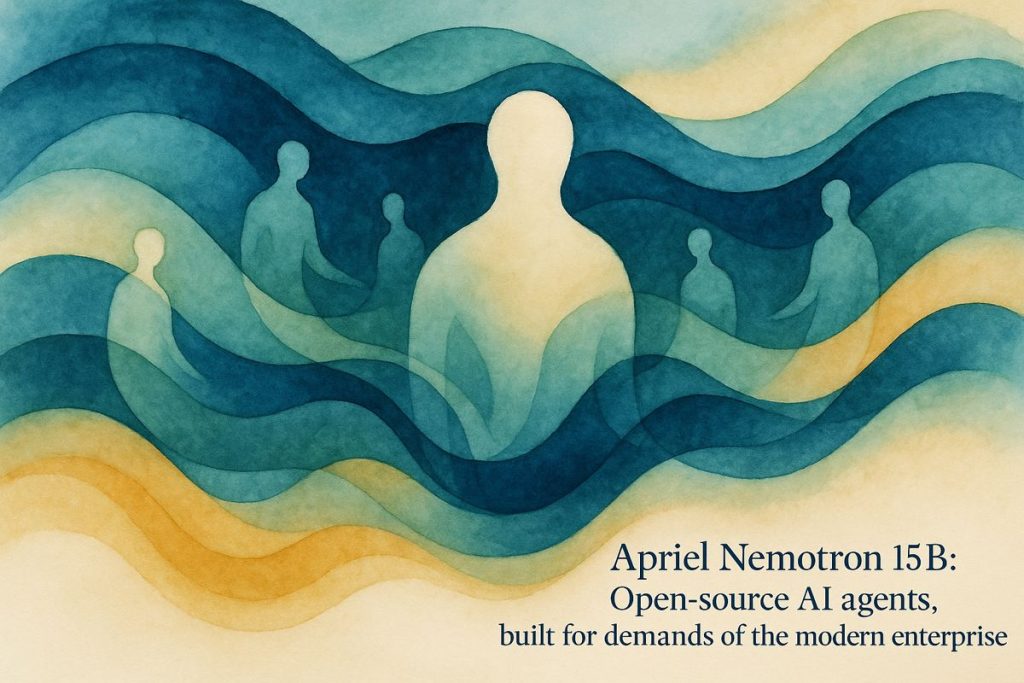Apriel Nemotron 15B is a powerful new open-source AI model built by ServiceNow and Nvidia. It’s designed for businesses, making their work smoother and faster without needing expensive computers. With 15 billion parameters, it finds the sweet spot between brains and budget, helping companies automate tasks like customer service and supply chain analysis. By sharing the model with everyone, ServiceNow and Nvidia invite the world to use, improve, and trust this AI, hoping it will really change how businesses work.
What is Apriel Nemotron 15B and why is it important for enterprise AI agents?
Apriel Nemotron 15B is an open-source large language model, co-developed by ServiceNow and Nvidia, optimized for enterprise AI agents. With 15 billion parameters, it balances efficiency and capability, reducing costs and hardware demands while enabling seamless, scalable workflow automation across various business processes.
The Espresso Jolt: AI Partnerships Get Real
Picture this: another rainy Seattle morning, the grind of espresso machines in the background, and somewhere in a glass-walled boardroom, engineers from ServiceNow and Nvidia are hunched over their laptops, knuckles white, eyes red-rimmed, chasing a peculiar dream. Could a mid-sized large language model—15 billion parameters, to be exact—be the magic number for enterprise AI agents? Not 7B, not 70B, but 15B, in that sweet spot where efficiency meets capability. It’s a Goldilocks bet.
This isn’t just another AI partnership slapped together for a press release. No, it’s more like two orchestras merging for a symphony, each bringing their own virtuoso section: ServiceNow’s relentless domain expertise, Nvidia’s hyperspectral hardware flexibility. The result? Apriel Nemotron 15B, an open-source LLM designed with the express purpose of making enterprise AI agents less of a science fair project and more of a practical, affordable asset for companies weighed down by process and legacy code.
Let’s be honest. The market is drowning in “dramatic” AI breakthroughs—most as ephemeral as morning fog. But here, the ambition is concrete: democratize access to advanced AI agents built for actual workflow automation, not just chatty demos or half-baked assistants. The CIO Dive article sums it up: cost, scale, and seamless integration are the non-negotiables.
Under the Hood: Engineering for the Unflashy, Unstoppable Agent
When I first read “15 billion parameters,” I nearly choked on my coffee—wasn’t bigger always better in the LLM arms race? But then I remembered the first time my team tried to shoehorn an LLM into a customer service bot in 2023: latency lagged like a dial-up modem and GPU bills made our CFO weep. There’s beauty in moderation, I realized. Apriel Nemotron 15B is more precise scalpel than sledgehammer.
The tech stack here is a palimpsest of modern AI architecture. Nvidia’s NeMo toolkit serves as the backbone, trained atop the open Llama Nemotron Post-Training Dataset (try saying that five times fast), and seasoned with ServiceNow’s private store of workflow data. All this gets cooked in Nvidia’s DGX Cloud on AWS—a hyperscale kitchen where, rumor has it, you can almost hear the faint hum of circuits thinking.
The model’s “agentic AI” focus is what sets it apart. Unlike generic LLMs (think: GPT-3, Gemini), this one’s brain has been wired for the peculiar logic of enterprise workflows—think of it as an ant colony, each agent tunneling through business logic, making independent decisions, yet never straying far from the queen’s rules. Apriel Nemotron 15B can process thousands of concurrent workflows without dropping packets or breaking into a digital sweat. If you’ve ever watched a load balancer pulse on a Friday afternoon, you know that’s no small feat.
Opening the Black Box: Cost, Concurrency, and the Open-Source Gambit
There’s a familiar smell to enterprise AI launches—burnt money. GPU costs skyrocket, cloud bills spiral, and somewhere in the distance, a project manager sighs. ServiceNow and Nvidia’s answer? Streamline. By optimizing for 15B parameters, inference times drop, hardware demands shrink, and the cost curve flattens. That’s not just theoretical: early pilots have shown that running a service desk agent on Apriel Nemotron 15B uses 30% less GPU time than a comparable GPT-3.5-based system. Bam!
The pièce de résistance, though, is open-sourcing the model. In an era where most players hoard their weights like dragon gold, ServiceNow and Nvidia toss theirs into the commons. This invites the broader AI community—academics, tinkerers, rival enterprises—to tweak, fine-tune, and stress-test the model. The hope? A virtuous cycle, a data flywheel (to borrow their metaphor) where innovation feeds back into the model, making it sharper, faster, and ever more tailored to real-world needs.
As Tech Edt notes, this strategy isn’t just PR. It’s about building trust and fostering a collaborative ecosystem where transparency trumps vendor lock-in.
Use Cases, Roadblocks, and the Scent of the Future
So what does all this get you, besides a snazzy press release and some bragging rights? Real deployments are already underway in customer service, supply chain analytics, and AI-driven marketing. One logistics firm (name NDA’ed, alas) reported a 20% reduction in ticket resolution time after swapping out a legacy LLM for Apriel Nemotron 15B—proof that sometimes, the new kid on the block actually delivers.
But there are thorns among the roses. Integration with legacy systems remains, to put it mildly, a bear. According to that same CIO Dive piece, almost 40% of enterprise tech heads say plugging new AI into old pipes is “quite or extremely difficult.” I’ve been there. Once, my team tried to bolt an AI workflow onto a 2005 SAP instance—the screeching from the logs still haunts my dreams. But this
